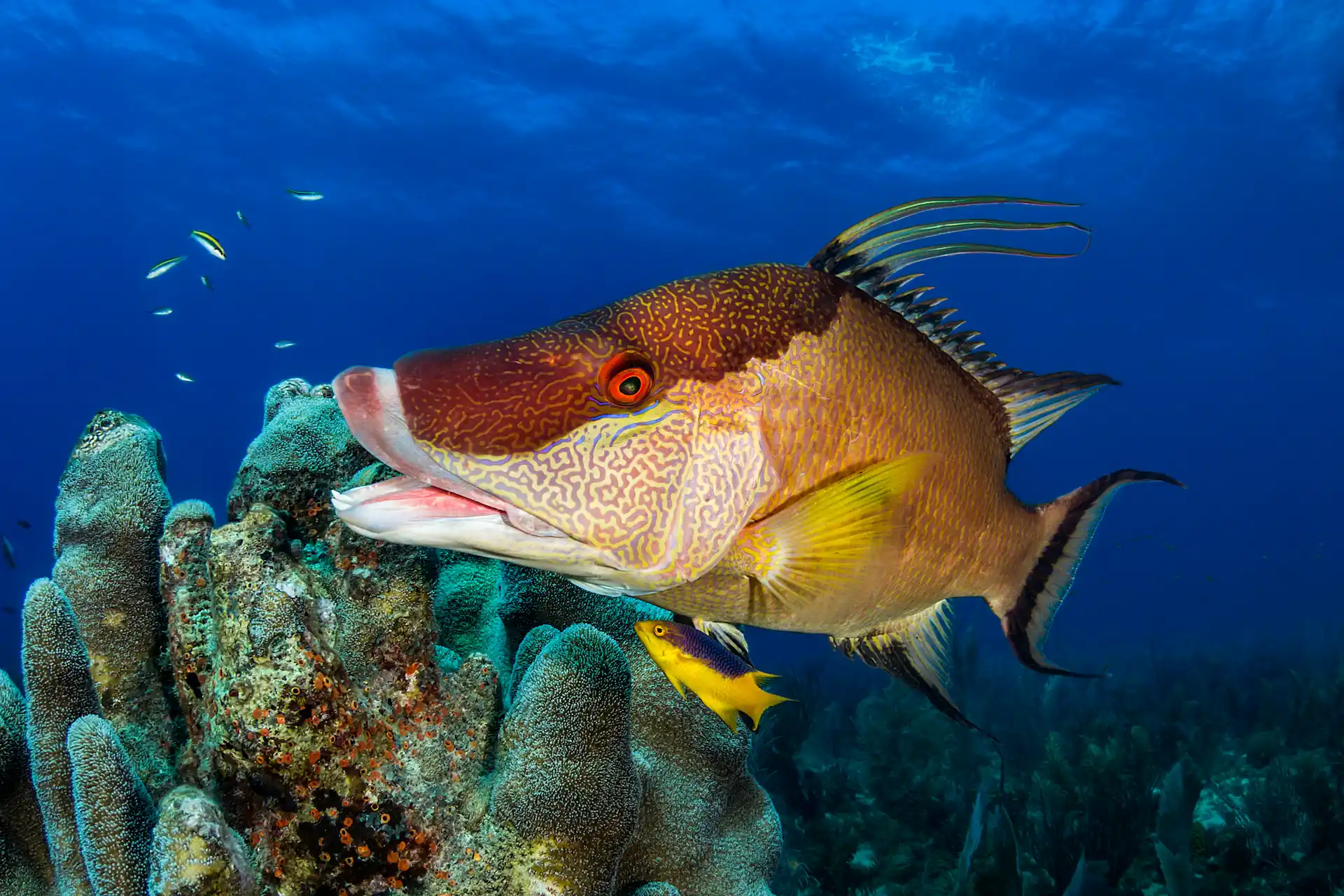
Wildlife Fact Sheet
Hogfish
Lachnolaimus maximus
About
Hogfish get their unique name from their long, hog-like nose. Their snout is not just for looks, though—hogfish use it to root around in the sand to find buried mollusks and crustaceans. Because hogfish spend most of the time on the ocean floor, it’s trickier for fishermen to nab them by hook and line. Instead, people resort to spearfishing to catch hogfish. The hogfish is a restaurant favorite with their white, flaky fillet. Hogfish are overfished in part of their range, leading fishery managers to implement size and bag limits for fishermen so that stocks can rebuild.

Did You Know?
Hogfish are protogynous hermaphrodites, meaning they can switch from females to males when they get to a larger size. Hogfish also form little fish harems, where one male hangs out and mates with multiple females.
Get Ocean Updates in Your Inbox
Sign up with your email and never miss an update.
Status and Conservation
Hogfish like to hang out on the ocean floor so they can be close to their food. You can see hogfish in small groups by reef edges around 10-100 feet below the surface. Hogfish particularly like areas with lots and lots of gorgonian corals.